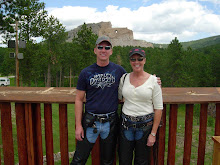I see that I've managed to almost miss June without a post, so here goes!
Many years ago, I wrote a brief article for MWAN that proposed that most games that I'd observed as convention games, or games that I'd played in, or games that could be played in a reasonable amount of time followed:
a) THE RULE OF TWELVE: Simply put, any battle can be reduced to a 12 unit or so limit of the core type of unit in the army. Obviously, in all but the most horse centered culture, this will be 12 units of infantry. Artillery and cavalry would then be proportioned off of the 12 infantry units.
A second rule that makes for collection sanity, and games that look and play well is:
b) THE RULE OF REASON: Another simple rule - The total number of units in a game shouldn't be more than the square footage of your table. If your table is 5'x10', that would be a 50 unit total. That could be 25 units per side, or 30 vs. 20, etc.
The RULE OF REASON doesn't imply that games of this size are needed, or should even be a goal. It really is just a common sense rule - don't put too much stuff on the table!!! Games with too high of a unit density just turn into a version of a zombie hunt. Pick of the first unit - guess what? - there's another unit right behind it - eliminate it - and guess what? - there's another unit behind it.
Yawn.
Too many troops for the table size just leads to plodding games of attrition.
I should say that both the RULE OF TWELVE and THE RULE OF REASON are based on "normal" unit sizes of 12 to 24 infantry figures, not the "old school" figure intensive 40+ figures per unit. Yikes - I think units of that size require their own set of rules!
Subscribe to:
Post Comments (Atom)

Hi Brent interesting post. but whats the reason behind your Rule of Twelve ? I can understand the Rule of reason but cant figure out why twelve core units is the business other than the fact that you might be able to make nice divisions into 3x4 unit groupings (or 4x3 or 2x 6 for that mather)
ReplyDeleteThe RoT was based on observations of games. No matter what the basic unit was called (company, battalion, regiment, brigade, etc), the vast majority of games seemed to have around 12 units of the basic type (infantry, usually) in them. As for a reason - I use it as a means of liberating me from the tendency to over-collect and create armies that are larger than I really need.
ReplyDeleteAnother one I've wondered about is ROS (the Rule of Sub-division?). No matter how many units an individual wargamer gets to play with on the table, is there a natural tendency to split the total into, say, three or four (maybe even five) forces / 'command groups.' In which case, there is no point in having too many units because you will group them into a handful of forces anyway. Thoughts?
ReplyDeleteDavy
I think that's a very normal tendency. As a very general rule, people feel comfortable managing or dealing with a maximum of three things - units, results, things to remember. Too much, and things just don't get done. Too few, and it feels incomplete or insignificant.
ReplyDeletePhil Barker nailed the rule of twelve with DBA.
ReplyDeleteHe didn't invent the concept, but codified what gamers had come to accept.
Combine two adages form the modern military and you'll see why it works.
A commander can effectively manage three manoeuvre units, and a reserve.
Notice how most armies have followed a rough "rule of three" since the 1930s (with the occasional 4th unit - often specialists) thrown in.
The second adage is "Issue commands one echelon down, know your dispositions two echelons down".
Combined with the rules of Three (and a bit), yields a company commander in charge of aproximately 12 sections, which are handily grouped into 3 or 4 platoons.
Several armies work a strict rule of three, with 9 sections, but such a company will nearly always fight with attached support elements.
At the top end of the count, I've only come across one company that deployed 16 sections. This was a glider company, and the numbers had a lot to do with the carry capacity of their craft.